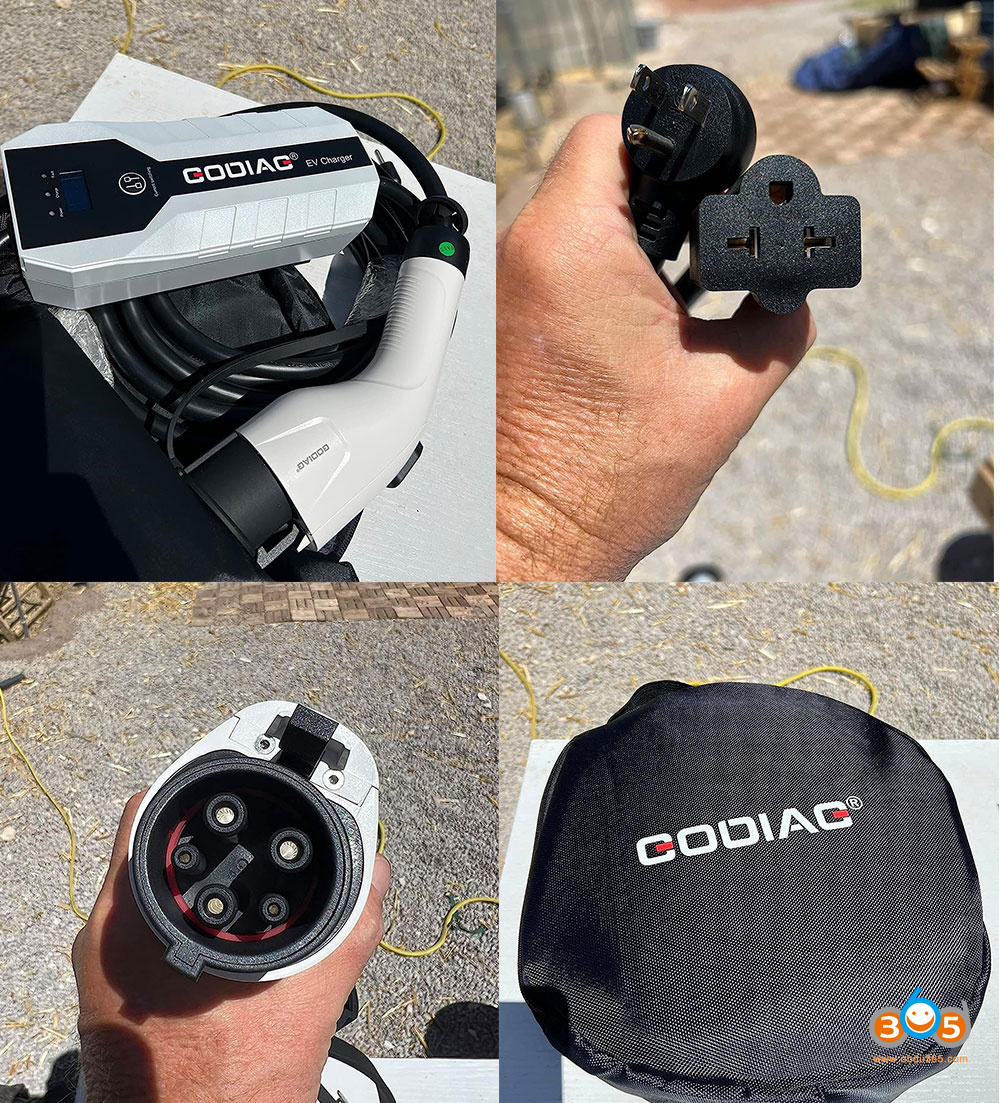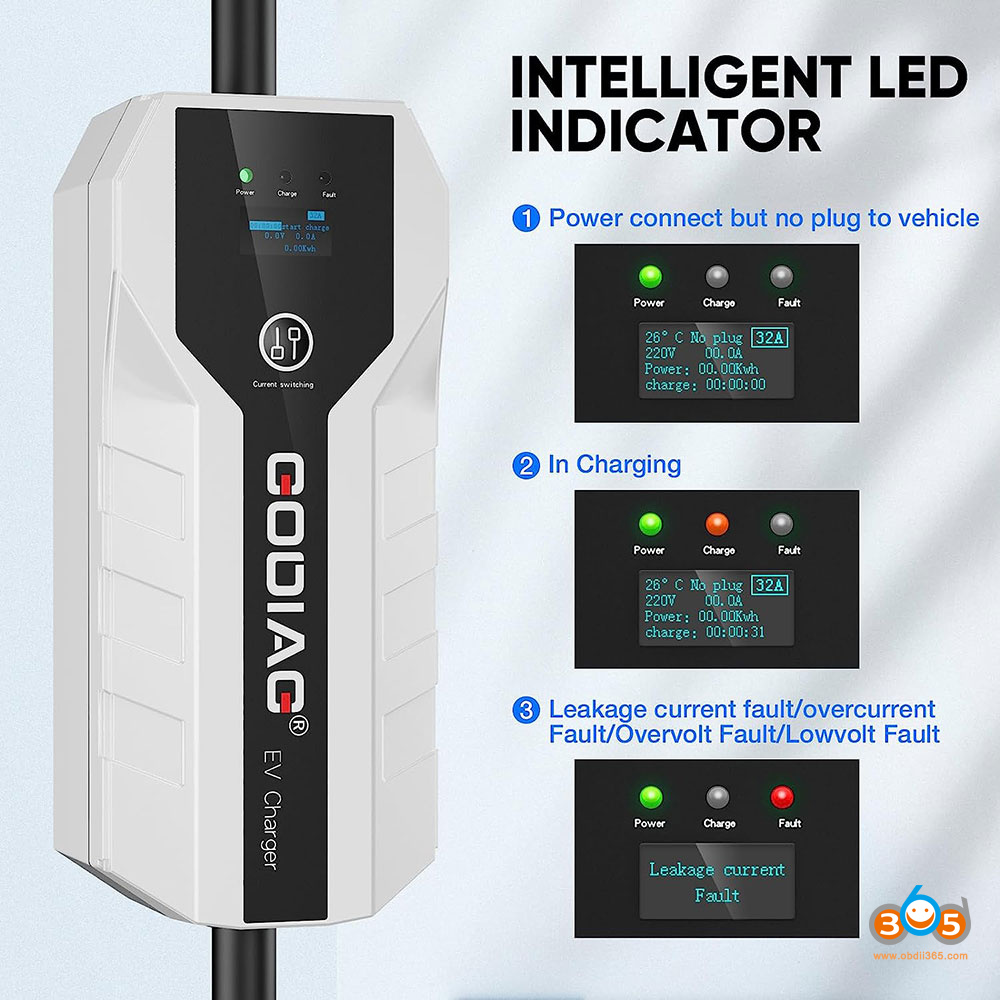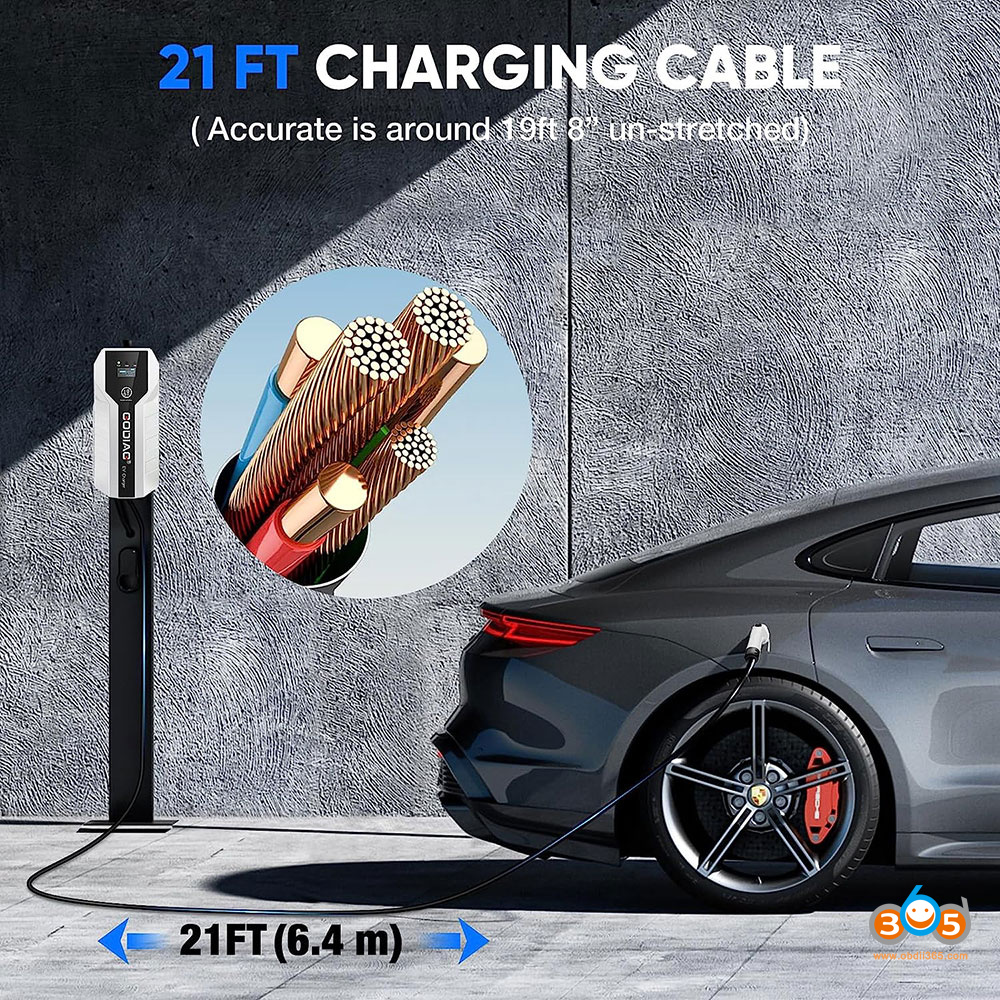You’ve made up your mind about buying an electric car. Now comes the part that’s specific to electric vehicles (EV)s: choosing a home charging station. This can seem complicated, but we’re here to help!
With electric cars, the process of charging at home looks like this: you arrive home; hit the car’s charging port release button; step out of the car; grab the cable from your (soon-to-be) new home charging station a few feet away and plug it in the car’s charging port. You can now go inside and enjoy the coziness of your home as your vehicle completes a charging session in tranquility. Tad-ah! Who ever said electric cars were complicated?
You’re now up to speed about the benefits of equipping your home with a level 2 charging station. There are different models and features to pick from, so we’ve prepared this handy guide to help you choose the right home charging station.
Before you start, here’s a fun fact that will make it easier to find the perfect home charging station to match your new vehicle:
In North America, every electric vehicle (EV) uses the same plug for level 2 charging. The only exception is Tesla cars which come with an adapter.
Otherwise, whether you chose to drive Audi, Chevrolet, Hyundai, Jaguar, Kia, Nissan, Porsche, Toyota, Volvo, and so on, electric cars sold in North America use the same plug—the SAE J1772 plug to be exact—to charge at home with a level 2 charging station.
You can now be sure that any level 2 charging station you pick will be compatible with your new electric car. Now, let’s get started with choosing the right home charging station, shall we?
Choosing where to put your home charging station
1. Where do you park?
First, think about your parking space. Do you usually park your electric car outdoors or in your garage?
The main reason why this is important is that not all home charging stations are weather-proof. Among the units that are weather-proof, their levels of resistance will also vary depending on how extreme the climate is.
So, if you live in a region that exposes your EV to icy winter conditions, heavy rain or strong heat for example, make sure to choose a home charging station that can handle these types of extreme weather conditions.
On the topic of extreme weather, choosing a home charging station with a flexible cable is the best option to manipulate it in colder climates.
2. Where will you install your home charging station?
Speaking of cables, when choosing a home charging station; pay attention to the length of the cable that comes with it. Each level 2 charging station has a cable that varies in length from one unit to another. With your parking space in mind, zoom in to the exact location where you plan on installing the level 2 charging station to make sure that the cable will be long enough to reach your electric car’s port!
For example, the home charging station have cables that range from 12ft to 25ft. Our recommendation is to choose a unit with a cable that is at at least 18 ft long. If that length isn’t sufficient, look for home charging stations with a 20ft cable.
If you have more than one EV to charge, there are mainly two options. First, you could get a dual charging station. These can charge two vehicles simultaneously and need to be installed somewhere where the cables can plug into both electric cars at the same time. The other option would be to purchase two smart charging stations (more on that later) and install them on a single circuit and link them. Although this gives you more flexibility with the installation, this option is generally more expensive (price range from $900 to $2500).
3. How nomadic are you?
If you tend to head over to your cottage on a weekly basis, or have a career that requires you to move often, you might choose a portable charging station, rather than a unit that is hard-wired and permanently-mounted.
Here are the differences between the two:
- Hard-wired and permanently-mounted:
Here, the home charging station is connected directly to the electrical panel with a wire. The installation of these units is often considered cleaner and are best for EV drivers that have a sedentary lifestyle. They also have the advantage of being much more difficult to steal, since someone would need to cut a live 240-volt wire to remove it.
- Portable:
These simply hang on the wall and plug into a 240-volt receptacle. With these, pay attention to the plug the portable charging station comes with—it will usually either be a NEMA 14-50P (a common outlet for electric stoves) or a NEMA 6-50P (a common outlet for welder plugs). Make sure it’s compatible with the wall receptacle. Some homes already have a 240-volt receptacle where the station will be installed, which makes it easy to match! If you don’t already have a 240-volt outlet, you can have an electrician install whichever matches the plug you purchase.
4. Which home charging station will charge your electric car the fastest?
EV charging time is dependent on a host of variables such as:
- Your EV’s battery size: the bigger it is, the longer it will take to charge.
- Your home charging station’s max power capacity: even if the vehicle on-board charger can accept a high power, if the home charging station can only output less, it will not charge the vehicle as fast as it can.
- Your EV’s on board charger power capacity: it can only accept a maximum power intake on 120V and 240V. If the charger can supply more, the vehicle will limit the charging power and affect the time to charge
- Environmental factors: a very cold or very hot battery can limit the max power intake and thus affect charging time.
Among these variables, the charging time of an electric car comes down to the following two: the power source and the vehicle’s on board charger capacity.
- Power source: you can plug in your EV to a regular household plug. These give 120-volt and can take over 24 hours to deliver a full battery charge. Now, with a level 2 charging station, we increase the power source to 240-volt, which can deliver a full battery charge in four to nine hours.
- EV on board charger capacity: The cable that you plug into an electric car directs the power source of electricity to the EV charger in the car that converts the AC electricity from the wall into DC to charge the battery.
If you’re a numbers person, here’s the formula for charging time: total charging time = kWh ÷ kW.
Meaning, if an electric car has a 10-kW on board charger and a 100-kWh battery, you can expect it to take 10 hours to charge a fully depleted battery.
This also means that even if you equip your home with one of the most powerful level 2 charging stations—such as one that can provide 9.6 kW—most electric cars won’t charge any faster.
5. What else can a home charging station do for you?
Some level 2 charging stations are ‘smart’ and can be controlled remotely with an app on your phone over WiFi or Bluetooth. These smart home charging stations don’t charge any faster, but they do offer perks, such as access control or data monitoring. If those interest you, check which smart features are offered by a specific home charging station before buying it.
One thing to keep in mind: Most EVs have their own smartphone app which can do some or all of these smart features, so we recommend you start by checking what your electric car already offers to make sure you don’t pay twice for the something you might already have.
6. How do I know if the charging station connector is compatible with my vehicle?
Almost all the charging stations come with a SAE J1772 connector, which is compatible with all electric and plug-in hybrid vehicles in North America. Tesla cars are equipped with a different connector, but a Tesla – SAE J1772 adapter is included with every Tesla.
7. Why do I need a level 2 charging station if a charger was already included with my car?
The biggest advantage of owning a level 2 charging station is the ability to charge your EV up to five times quicker than with the car’s charger (110V charger). This means that your vehicle will be fully charged every morning and that a short charge will allow you to go farther.
8. What differentiates a charging station from another?
Charging stations usually differentiate themselves in terms of power, cable length, aesthetic, and if they can be installed outside. In order to choose the right station, it’s important to know your needs.
9. How much power do I need my station to have?
The power needed depends on the power acceptance of your electric or vehicle. A 30A (7.2kW) charger is enough for most cars. A 40A (9.6kW) station might be useful in the long run, as future generations of EVs might have a higher power acceptance than current EVs.
10. How fast can I charge with a level 2 charging station?
The time it takes to charge depends on the car. In most cases, a 30A station allows you to charge up to five times faster than 110V charging, whereas a 40A station allows up to 7 times faster charging.
11. Can a level 2 home charging station be installed outside?
Most home charging stations are made for indoor and outdoor installation and work well from -30°C to 50°C (-22°F to 122°F). If you plan on charging outside, we recommend that you verify this aspect since some chargers are only made for inside purposes.
12. What is the ideal cable length?
We strongly suggest that you get a cable that is at least 18 ft. long so you can charge your car no matter how it is parked (front or back).
13. Is it possible that my station might get stolen outside?
While stations installed outside are more easily stolen, especially portable models, most of them can be locked with a padlock to prevent it from being stolen. If you want to install your charging station outside, we highly recommend you to choose a station with an anti-theft feature.
14. Is a home charging station worth it?
Charging at home with an EV home charger is faster.
The capacity of a home EV charger depends on your needs, your car, and your home’s electrical system, but it will be at least 3 times faster than charging via a regular outlet and can be up to 5 or even 15 times faster with higher-powered Ev home chargers.
15. These home charging stations are portable?
Only some home charging stations are portable. offer simple installations that can be completed without any specific tools or wiring, making them easy to transport between two places of use. Once a wall support is installed, it is simple to unplug any of these home charging stations and unhook them from the wall. These portable home charging stations only takes a few seconds to set up. Another advantage is their light and compact designs, further facilitating transportation.
16. What EV Charger is Better for Beginners?
Depends on your budget and needs. Each home charging station offers different attributes and specifications to consider when purchasing a home charging solution. Depending on your budget, driving habits and living circumstances, you might prefer certain charging station models. If you are a beginner, godiag EV charger is great for the money ($149).
Godiag EV Charger Supported Vehicle Range
Operation Tips for Godiag EV Charger:
1. The vehicle is in P gear or stopped and turned off: some models cannot charge when the car is not turned off!
2. Open the cover of the charging port and check whether there are foreign objects such as water stains or mud sand on the interface, which must be cleaned up.
3. Insert the charger into the charging port and push it to the end: Do not press the button switch when inserting the charger, and you will hear a “click” lock sound indicating that it has been inserted in place.
5. At this time, the vehicle will appear charging, or the charging adapter will light up to remind you.
6. After charging is completed, press the buckle on the charger and pull out the charger.
7. Store the charger for the next use.
8. If you get “system error”, please check your voltage input. If input voltage too low, the ev charger will have that error message.
Godiag EV Chager Pros & Cons:
Pros:
The build quality of this adapter is outstanding. It is made with high-quality materials that ensure durability and longevity.
It is suitable for 99% of electric vehicles with the standard J1772 charging port in the market of United States.
It’s simple and easy to store and carry. It is portable and lightweight compared with the similar products.
It has LED display. You can easily read the voltage, Amp from the LED display of the EV101 EV Charger.
with Level 2 support, you can charging vehicle 3x fast than normal charger.
With the built-in dusty-free cover, it won’t collect dust or get dirty.
Godiag EV Charger not only fit for almost all J1772 standard EVs and PHEVs, but also works for those motorcycle EVs like Zero which compliance with J1772 protocol.
Great Value for Money
Cons:
It is not WiFi or Bluetooth enabled, so does not have Smart APP Control, price is way cheaper than a WiFi EV charger.


























